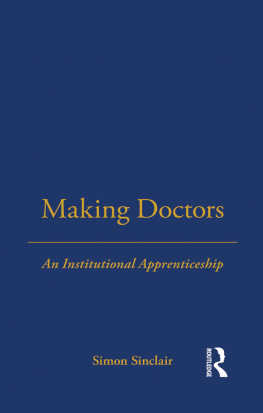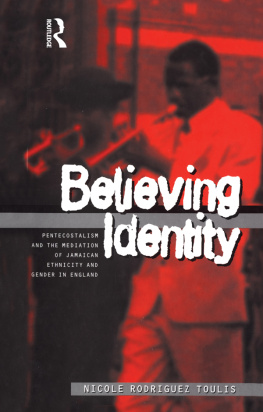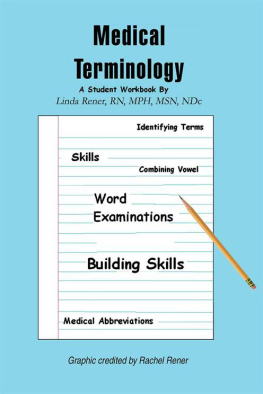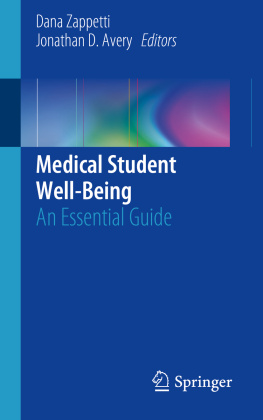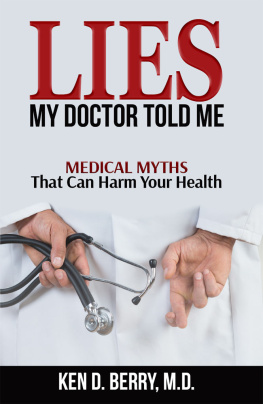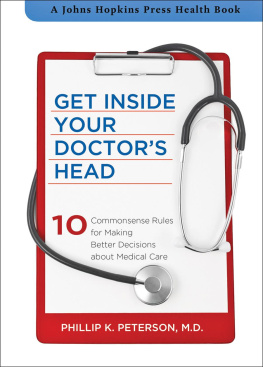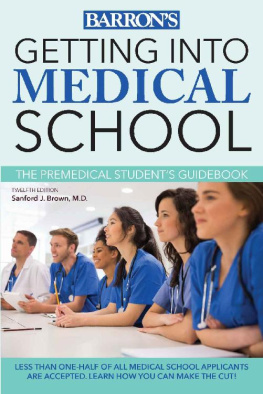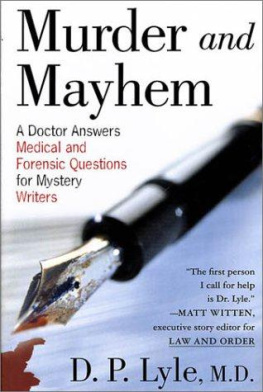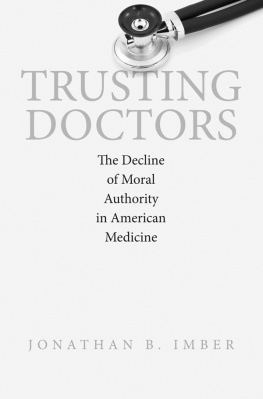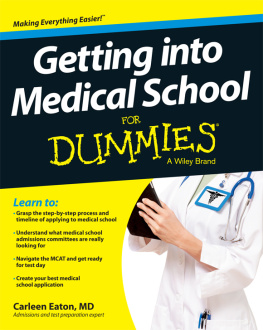Making Doctors
EXPLORATIONS IN ANTHROPOLOGY
A University College London Series
Series Editors: Barbara Bender, John Gledhill and Bruce Kapferer
First published 1997 by Berg Publishers
Published 2020 by Routledge
2 Park Square, Milton Park, Abingdon, Oxon OX14 4RN
605 Third Avenue, New York, NY 10017
Routledge is an imprint of the Taylor & Francis Group, an in forma business
Simon Sinclair 1997
All rights reserved. No part of this book may be reprinted or reproduced or utilised in any form or by any electronic, mechanical, or other means, now known or hereafter invented, including photocopying and recording, or in any information storage or retrieval system, without permission in writing from the publishers.
Notice:
Product or corporate names may be trademarks or registered trademarks, and are used only for identification and explanation without intent to infringe.
Library of Congress Cataloging-in-Publication Data
A catalogue record for this book is available from the Library of Congress.
British Library Cataloguing-in-Publication Data
A catalogue record for this book is available from the British Library.
Typeset by JS Typesetting, Wellingborough, Northants.
ISBN 13: 978-1-8597-3950-1 (hbk)
For MA
This book evolved from research undertaken in the Department of Anthropology at the London School of Economics and Political Science, for which I received an ESRC grant for three years. I sought and received help from a large number of people, before, during, and after fieldwork. While most are named below, there are no doubt others, whom, for one reason or another, are not: to these I apologise. The variety of such assistance was enormous, ranging from brief telephone calls to lengthy discussions.
I should like to thank Dr Isobel Allen, Professor Paul Atkinson, Mr Chris Bulstrode, Professor Bill Bynum, Kieran Coonan QC, Dr Chris Evans, Dr Jenny Firth-Cozens, Professor Ronnie Frankenburg, Dr Madeleine Ganley, Dr Graham Gibbs, Professor Conrad Harris, Dr Tim Healey, Dr Tim Horder, Dr Tony Hope, Professor Liam Hudson, Dr Helen Kennerley, Professor Roland Littlewood, Professor Chris McManus, Professor Marshall Marinker, Isabel Menzies-Lyth, Lesley Millard, the late Dr Clare Vaughan, Dr Andrew Powell, Mr Peter Riddell, Dr Anthony Ryle, Dr Alan Shrank and Susan Spindler.
At University College London Medical School I should like to record my particular thanks to Dr David Brenton (without whose help my fieldwork in the teaching hospital would have been impossible), as well as thanking Dr Peter Abrahams, Dr John Betteridge, Dr Gerald Bevan, Professor Geoffrey Bumstock, Dr Brenda Cross, Dr Chris Dean, Mr Tim Davidson, Dr Charles Engel, Professor John Foreman, Dr Frances Lefford, Dr Arthur Miller, Dr Elizabeth Murray, Professor James Malone-Lee, Professor Stanton Newman, Dr Elizabeth Paice, Professor John Pattison, the late Professor John Pegington, Dr Diana Sanders, Dr Graham Scambler, Professor Irving Taylor, Dr Angela Towle, Professor John Wyllie, Dr Lucy Yardley and the administrative staff at the Medical School (especially Gwen Austin, Suzy Nichols and Gaynor Jones) and other officials of UCL. I should, of course, also like to thank the medical students and housemen among whom I worked, particularly the officers of the Students Union and the various official and unofficial teams that granted me temporary membership. I am indebted to Christopher Bellew for the generous provision of a room in London to live in for the years fieldwork.
For help given while writing this book, I should like to thank Professor Peter Loizos and Professor Johnny Parry and the members of the seminar group at the LSE, and, for several helpful comments, my examiners Dr Sophie Day and Dr Gilbert Lewis, as well as Dr Julie Bland, Dr David Gellner, Dr Peter Jarrett and Sarah Newell. Finally here, I should record my great indebtedness to the late Dr Phil Strong, to whose encouragement and advice I owe so much.
The range of my acknowledgements to those who, in one way or another, have influenced what follows, should itself indicate my great dependence on others co-operation in writing this book; responsibility for it, however, remains mine alone.
I am also grateful to UCL External Affairs and to Michele Minto of the Wellcome Centre Medical Photographic Library for help with the illustrations, and to those at Berg Publishers. The chapter headings in verse are taken from: The Eathen () in The Collected Ewart 19331980: Poems by Gavin Ewart (Hutchinson 1980), by permission of Margo Ewart.
Chapter 1
Introduction
One might say that the learning of the medical role consists of a separation, almost an alienation, of the student from the lay medical world; a passing through the mirror so that one looks out on the world from behind it, and sees things in mirror writing.
Everett Hughes (1984: 399)
A General Introduction to Basic Medical Training
This book is principally an account of passing through the mirror, in Hughes famous phrase. It deals with the basic medical training in a London teaching hospital as it was in 1993/4, when the structure of training in most medical schools in England had remained fundamentally unchanged for the last 150 years or so. In outline, the traditional training (both here and in the United States, where it has been broadly similar) has three structural levels. The first consists of two preclinical years; this is followed here by three years clinical training; and the third level (known as internship in the US) is the pre-registration year of General Clinical Training, when newly qualified doctors work as House Officers, usually for six months in Medicine and six months in Surgery. Such uniformity and stability has great advantages for anyone such as myself; studies of the traditional form of training, whether in this country or the United States, remain pertinent even though published many years ago.
It should be noted that the word medicine is used in two different ways: as a branch or segment of the profession, often, as above, in opposition to Surgery, and as another name for the medical profession itself. This ambiguity is found in common usage and, to avoid confusion, in what follows I shall indicate the segment of the profession as I have above, by giving it a capital letter. It should also be noted that the process I describe may be referred to both as medical education and as medical training: medical schools have been independently granted both graduating and licensing functions, and these two functions, of education and training, are inextricably confused (see McManus 1995). The university degree (MB BS at London University, for example) is also a preliminary licence to practise medicine and, most unusually for university degrees, is unclassed; you either pass or fail, you are either provisionally registered or you are not. While the educative function is now to some extent provided by the optional B.Sc., usually taken between the preclinical and clinical courses, there seems no doubt that the compulsory course is rightly called a training, and I shall continue to refer to it as this throughout.
My account regards medical training very much on its own, largely unaffected by the wider world; the voices of patients, for example, are rarely heard. This reflects the professions real autonomy. Of course, any profession has, and must have, its own expertise, its own knowledge and skills; but, in addition to modern Western medicines spectacular technical and scientific advances, medicine also owes its own pre-eminent success to its ethical commitments and their proclaimed affinity with lay aspirations. Freidson (1970) suggests that this combination has conserved the professions right to continued self-regulation and the independence of its practitioners from review, whether by the lay public (either by patients or the general population) or by professional colleagues; practitioners are accountable only to the profession itself. It also seems to have conserved the professions right to train its future members in its own way, and this has tended to be the way that its senior members were themselves trained. Questions have been raised about both the justification for and the effect of such autonomy. Freidson does not deny the huge advances of specialist scientific knowledge about disease and its treatment, but reckons that such advances may actually have impeded the social modes of doctors application of that knowledge for the benefit of patients. His prescription for bringing professional practice more in line with patients wishes has several features: much wider recruitment; the dismantling of self-sufficient teaching institutions; the encouragement of regular interaction between different sorts of doctors, particularly between those working in hospital and those in the community (where, he notes, the former might learn from the latter about the non-scientific aspects of practice in treating patients illness); and finally, regular review of practice in the light of both professional and lay standards. Given the stability of the traditional training, and assuming that, to take best effect, any such reforms should be introduced in these formative training years, it should be no great surprise that these features are hardly to be found there, and, where they are, they make little impression.

